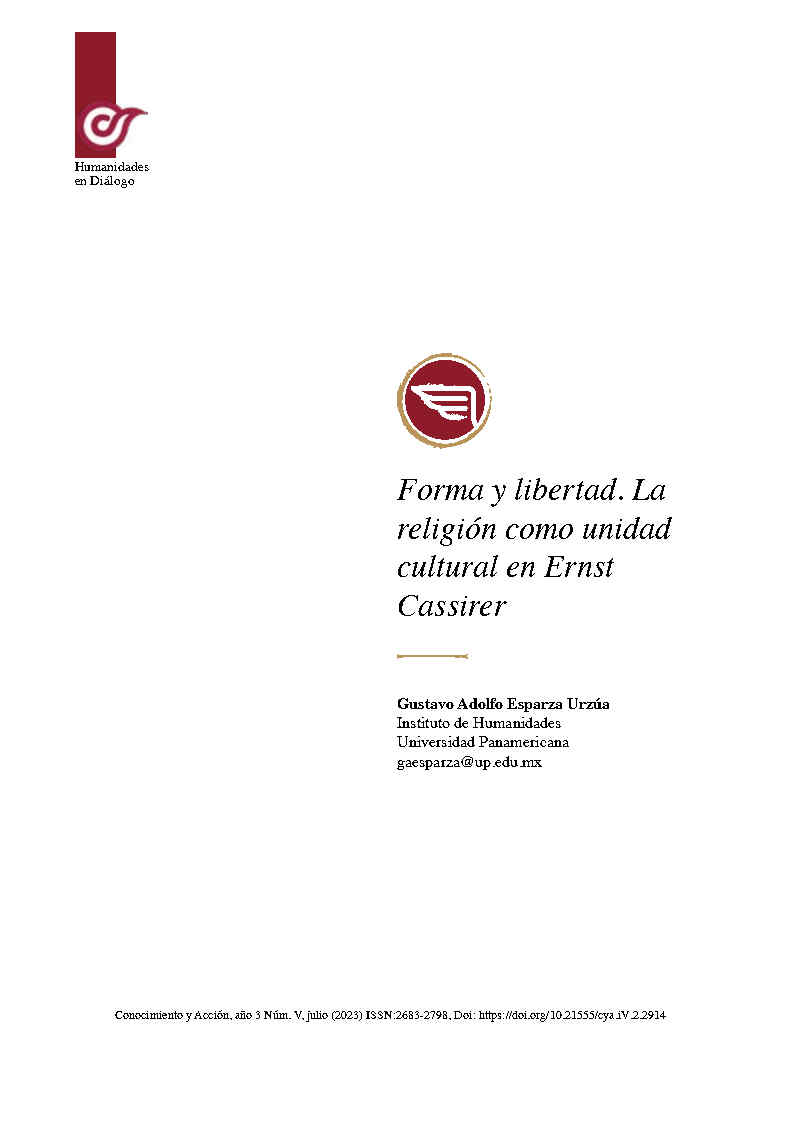
Published 2023-07-18
Keywords
- Form,
- Freedom,
- Encounter,
- Culture,
- Cassirer
Copyright (c) 2023 Conocimiento y Acción

This work is licensed under a Creative Commons Attribution-NonCommercial-ShareAlike 4.0 International License.
How to Cite
Abstract
This article studies the religious experience as a moment of encounter and cultural unity. From the philosophy of Religion proposed by Ernst Cassirer in Mythical Thought, an interpretation of two texts is elaborated: the encounter between San Juan Diego and the Virgin Mary (Tonantzin Guadalupe) and Moses and the Burning Bush (Yahweh); with both analyses two central results are manifested: (1) that the emotional warning, denominated by Cassirer as “symbolic expression”, constitutes the foundation of the encounter and unity between the human being and the divinity and (2) that such symbolic expression implies ritual activities through which the understanding of the mystery is possible.
References
- Cassirer Ernst, “Remarks at Herman’s Cohen Grave. April 7, 1918.” En: Writings on Neo Kantians & Jewish Philosophy. Ed. by Samuel Moyn and Robert S. Schine, Massachusetts: Brandeis University Press, 2021.
- Cassirer, Ernst, An essay on man. An introduction to a Philosophy of Culture, New Haven and London: Yale University Press, 1945.
- Cassirer, Ernst. Filosofía de las formas simbólicas, Vol. 2. El pensamiento mítico. Trad. Por Armando Morones, México: Fondo de Cultura Económica, 1998.
- Juan Pablo II, Canonización de Juan Diego Cuauhtlatoatzin. Homilia del santo padre Juan Pablo II. (miércoles 31 de julio de 2002. En: https://www.vatican.va/content/john-paul-ii/en/homilies/2002/documents/hf_jp-ii_hom_20020731_canonization-mexico.html
- León-Portilla, Miguel, ed., Tonantizn Guadalupe. Pensamiento náhuatl y mensaje cristiano en el Nican mopohua, México: Fondo de Cultura Económica, 2020.

